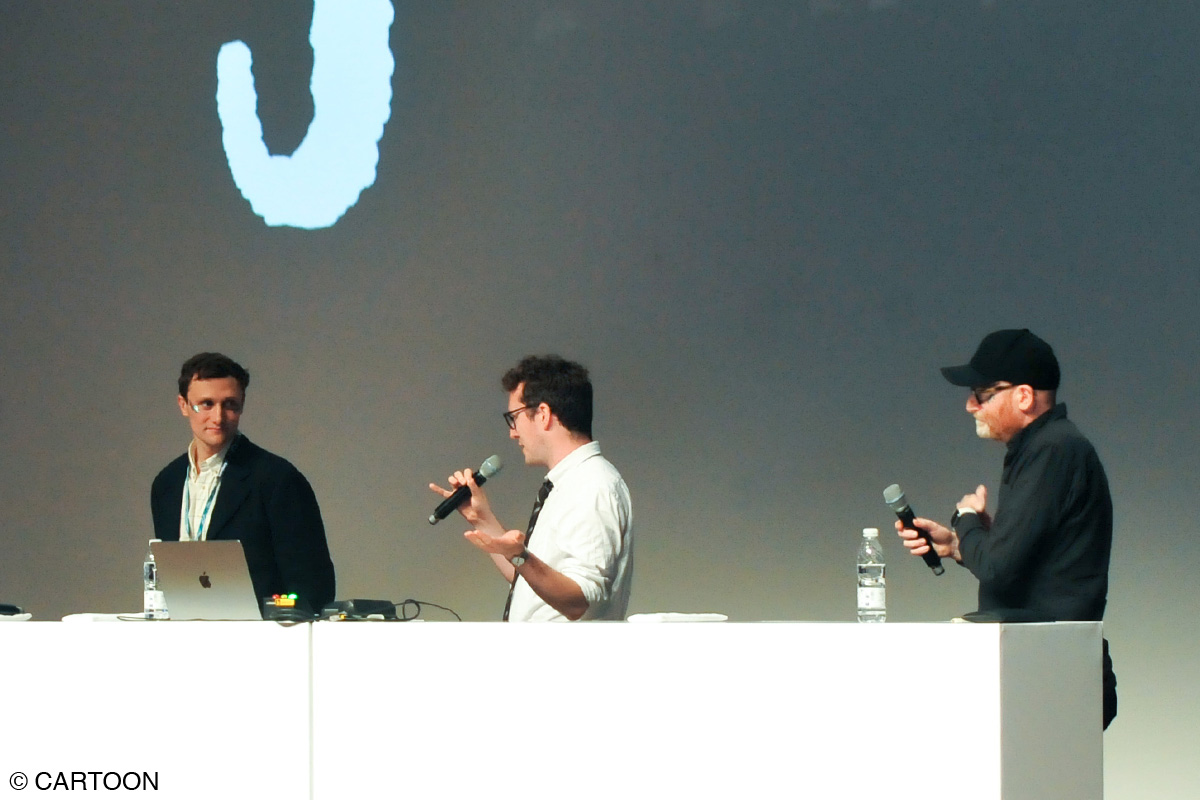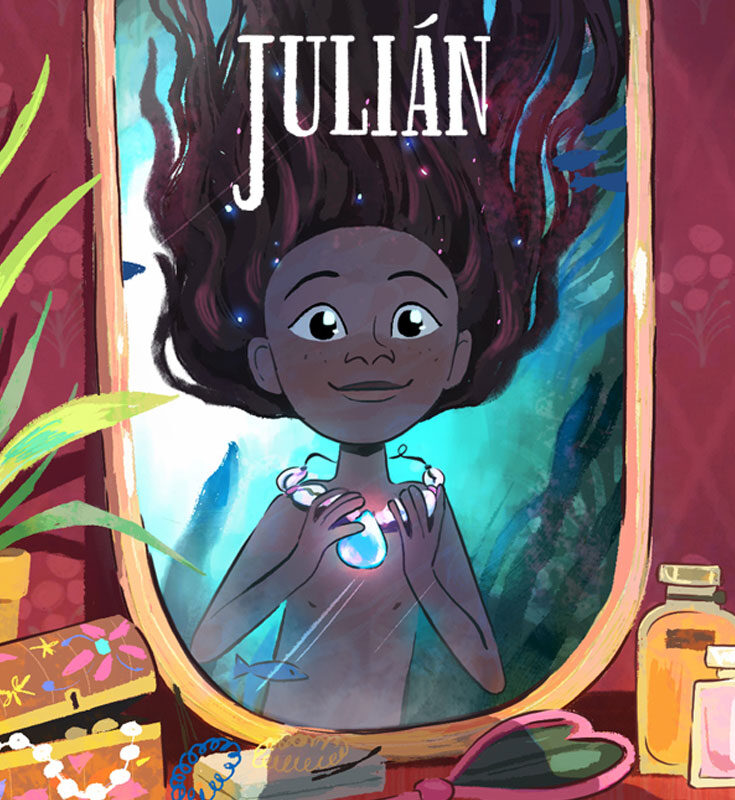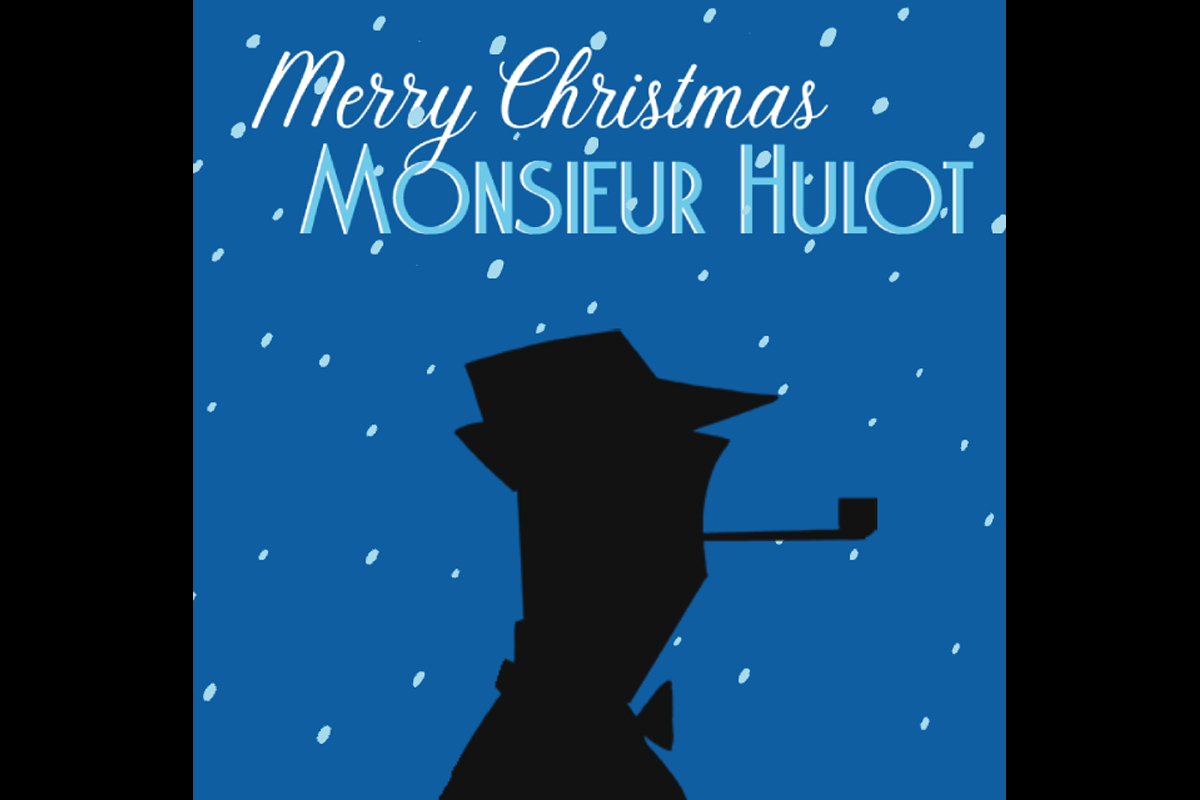Julián
(Status: In Development)
Synopsis
Julián is the story of a boy who wants to be a mermaid. The wide-eyed Julián spends a summer of discovery in NYC with his Abuela. Nearly strangers, they brace themselves for tense conversations and new adventures. The colourful chaos of Abuela’s world, and the stories she tells him, awakens something within Julián… questions about who he is and who he could be. Julián’s journey will reach across the diaspora, from Brooklyn block to the depths of the ocean, in an intergenerational ebb and flow. Through Abuela’s world, Julián explores his identity, gender expression and the hidden heritage of his family.
Julián
Director: Louise Bagnall
Co-Directors: Guillaume Lorin and Mark Mullery
Scriptwriter: juliany taveras (Adaptation from Julián is a Mermaid by Jessica Love)
Main producer: Paul Young (Cartoon Saloon, Ireland)
Co-producers: Charlotte de la Gournerie (Sun Creature, Denmark), Thibaut Ruby (Folivari, France), Damien Brunner (Folivari, France), Anthony Leo (Aircraft Pictures, Canada), and Lewis Taylor (Wychwood Media, UK)
Target Audience: Family
Technique: 2D digital, drawing, painting
Format: 85′
Julián is a new, highly-anticipated feature film project from Cartoon Saloon, one of the world’s most high-profile studios that has been nominated for Academy Award for Best Animated Feature four times.
The film will tell a fantasy story of a boy who is drawn towards the beauty of mermaids, embarking him on an adventure of self-discovery. The story is based on Jessica Love’s children’s book Julián is a Mermaid, rendered in delicate and gentle 2D animation, which is one of the attractions of the Cartoon Saloon’s works.
It was pitched at Cartoon Movie 2023 and revealed several visual materials for the film that had us looking forward to the finished work, planned to be released in 2025.
We interviewed the two co-directors, Guillaume Lorin and Mark Mullery, and the producer Paul Young.
Interview with Guillaume Lorin, Mark Mullery, and Paul Young
Hideki Nagaishi (HN): What part of the film do you think would appeal to the global audience the most? And what message or experience do you most want to deliver to them through this film?
Mark Mullery: The story-appeal is truly global in that it’s about a child discovering who they are while on their summer holidays. Most people have experienced reinventing themselves even just a little when around new people for the first time, especially as a child or a teenager. New people can be scary, especially when you don’t know if you can trust them, but they can also present a safe opportunity for you to act or express yourself differently, without the judgement of those who already think they know you.
Guillaume Lorin: To me this movie is the first love story/romance from Cartoon Saloon. It is a beautiful story casting Afro-descent characters with whom we learn how to fall in love with yourself in order to live your truth, learning to support the ones you love and be there for them when they need you. Learning that love can be unconditional when it comes from the right place. It shows that love, whatever its colour, is universal. In the end, what is more appealing than love?
HN: How did the film project start?
Paul Young: We were approached by David Yates who had bought to rights to produce Jessica Love’s wonderful Picture Book, Julian is a Mermaid. I share the book around with the creative leadership in here and Lousie Bagnall was very enthusiastic about it. I introduced David and his team to her film Late Afternoon which they really loved. So we decided to develop it together with Louise as Director.
HN: Louise is co-directing the film with Mark Mullery and Guillaume Lorin. How did Mark and Guillaume join the project? Is there a clear division of roles between the three directors?
Paul Young: On our features, we often have co-directors to help support the director as it’s such a huge task. Mark has excelled here as an assistant director for many years working with both Nora and Tomm on their features, providing essential creative and technical support. Guillaume was an amazing help with us on story development and boarding on Wolfwalkers before going home to France to direct a widely celebrated half-hour Special called Vanille. So both of them bring a different kind of experience to help Louise and both have also worked very closely with her in the past. Mark is focusing for now on the visual direction with Emile Bach and Guillaume on the storyboard and animatic. It is marvelous that they are here to keep the ship moving while Louise takes a break to enjoy welcoming her new baby to the world.
HN: What part of the original childrens book Julián Is a Mermaid, written and drawn by Jessica Love, did attract you the most?
Mark Mullery: This might sound strange, but the thing that first attracted me to the book was its brown paper. I am obsessed with how the art is presented; the containers, the canvases, the negative spaces. I love how in an old book you can feel the ‘bite’ of the letterforms pressed into the paper. I love how in old silent movies the image was often a soft ellipse of light in the middle of the frame so that the frame edges disappeared into the darkness of the cinema. There’s a 20+ volume book series of the works of Otomo Katsuhiro being published right now and Volumes 23 and 24 are collections of layouts and key drawings, along with some finished cel reproductions. The cel reproductions are printed onto clear acetate just like real animation cels. This clear negative space is the most perfect way to present this art form to the reader, and I feel the same way about Jessica Love’s delicate character renderings printed onto the brown book paper.
Guillaume Lorin: Definitely the scene when the grandmother finds out that her grandchild has wrecked her apartment to disguise as a mermaid. It is a moment that plays with the expectation of the reader because it triggers our belief that because he misbehaved he might get scolded or that as a boy, maybe he shouldn’t dress up as a mermaid, but the grandmother’s reaction is the key to the beauty of the book. She surprises us by giving her grandson the best of gifts: compassion and support.
HN: You will be extending the story of the picture book into an 85-minute-long story. In terms of storytelling, how will you make the best use of the feature film length? For example, adding new episodes, or depicting each scene of the original book in depth, etc.?
Guillaume Lorin: When I arrived on the project, Louise Bagnall (the director) and Julianny Taveras (the scriptwriter) had already created an amazing universe, a new exciting way of showing that story, presenting beautiful backstories for the main characters and numerous scenes before and in between the ones in the book; fleshing out some side characters giving them a beautiful presence and life to create the most tangible and touching story possible in total respect with the book’s intentions. What I love is that we are also bringing forward more inspiration and presence of the Caribbean upbringing of the characters, adding another layer of richness to this already very beautiful story.
HN: In addition to the previous question, I would like to hear about what you will take care in the most for the story development.
Guillaume Lorin: As co director, I am in charge of supervising the storyboard and the animatic; making sure that we are telling/showing this story the best way possible simultaneously with the development of the art direction of the film.
Storyboarding is my favourite part of making a film: This is where the characters appear for the first time as we follow them visually through the story. It is the step that will define exactly how the story will be seen and felt by the audience, and that is very exciting.
HN: What is the most important characteristic and goal of the film’s visual design of the characters and the setting/backgrounds/environment?
Mark Mullery: This film is being designed so that it could be made only with drawings and paintings. This might sound like a crude answer, but CGI, puppet-rigging, AI, all present a challenge to us: what are we doing visually with the medium we love that couldn’t be done in another way by someone else? All hand-drawn movies must exist somewhere between the illustrative and the cinematic. CGI makes the cinematic straightforward, with its endless virtual lights and lenses and its 360 degrees of free motion. In Cartoon Saloon we ask if we can construct the image cut-by-cut in an illustrative way, without forgoing the cinematic. The film’s visual style exists between two metaphors, the näive imagination of a child and his colouring pencils, and the actuality of the mermaid costume he wants to make real.








